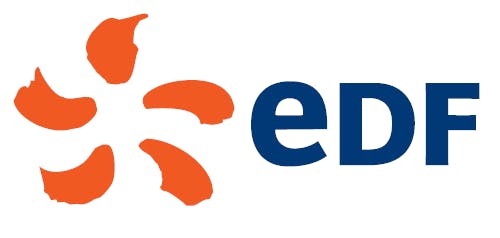3.1.1.4.5 Management of intermittence and flexibility
See section 3.1.4.2.2 “Better management of intermittence, flexibility and storage development”.
3.1.1.5 Roadmap for reducing the Group’s indirect GHG emissions
The following diagram shows the estimated impact of the main actions taken to reduce the EDF group’s Scope 3 indirect greenhouse gas emissions.

The following diagram shows the estimated impact of the main actions taken to reduce the EDF group’s Scope 3 indirect greenhouse gas emissions.
2019 emissions (en MtCO₂e) : 119
Reduction of emissions related to gas sales : -20
Reduction of emissions from non-controlled assets : -8
Reduction of emissions related to electricity purchases : -5
Reduction of emissions related to travel : -0,3
2030 emissions (in MtCO₂e): 86
There has been a decrease of approximately -28% between 2019 and 2030
The following table sets out the actions implemented by the EDF group.
| Action | Description | URD Section |
|---|---|---|
| Reduction in emissions relating to the sale of gas | Reduction in emissions relating to the sale of gasDescription Gas customer portfolio management; Support to consumers in their transition towards energy sobriety, energy efficiency, and the reduction of their emissions via Group offers, expertise, and subsidiaries, in particular by promoting alternative solutions to fossil fuels; increasing the rate of dispatch of biogas into the natural gas distribution network, in line with national strategies. |
Reduction in emissions relating to the sale of gasURD Section 3.1.4 |
| Reduction in emissions relating to the purchase of electricity | Reduction in emissions relating to the purchase of electricityDescription Greening (use of renewable energy PPA’s) of purchases of electricity for sale to end customers, including in countries where electricity has a high carbon intensity; portfolio management for customers for whom EDF sells but does not produce electricity. |
Reduction in emissions relating to the purchase of electricityURD Section 3.1.4.2.3 |
| Reducing travel emissions | Reducing travel emissionsDescription Reducing emissions from employee travel, particularly in view of the roll-out of the EDF group’s travel policy |
Reducing travel emissionsURD Section 3.2.4.3.2 |
| Reduction of emissions from non- controlled assets | Reduction of emissions from non- controlled assetsDescription Divestment by 2030 from coal-fired electrical power generation located in China, in which the EDF group has a minority stake. |
Reduction of emissions from non- controlled assetsURD Section
|
These actions make use of tried and tested technology, with good visibility in terms of economic and regulatory environments.
3.1.1.6 Carbon offsetting solutions
3.1.1.6.1 Policy
For the EDF group, use of carbon offsetting is the final stage of a process to achieve neutrality, based on the “Avoid-Reduce-Compensate” approach. Therefore, carbon offsetting must not under any circumstances take the place of a strategy designed to drastically reduce the Group’s emissions, whether direct or indirect.
The EDF group is focusing on the use of “negative emissions” projects to offset its residual emissions by 2050, compared to “avoided emissions” projects. This can include technological solutions, such as Bio-Energy with CO2 Capture and Storage (BECCS), or natural solutions, such as carbon storage in forests and soil.
In accordance with current carbon compatibility rules (1), emission credits from carbon offsetting are not deducted from the EDF group greenhouse gas report and are accounted for separately.
EDF’s offset fund
Increased use of thermal coal and fuel-oil-fired power generation to address temporary energy supply difficulties (2) entails an obligation for the operators in question to offset any surplus emissions produced as a result of the emissions cap being raised following a decision by the authorities. For more details, see section 3.1.1.3.1.
(1) GHG Protocol Corporate Accounting and Reporting Standard, WRI-WBCSD, 2015.
(2) See the paragraph on “Tightly controlled and ultimately limited operation” in section 3.1.1.3.1.
